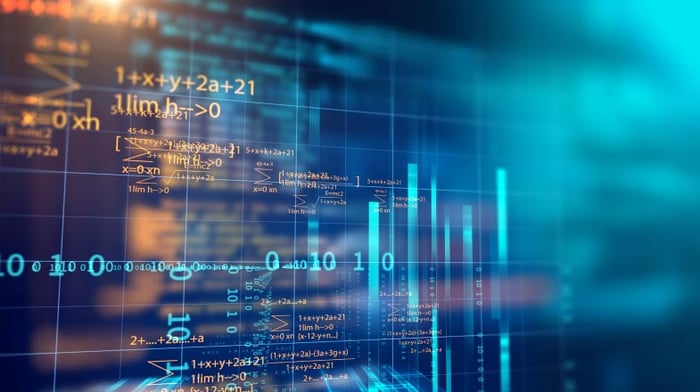This interactive portal improves the analytic experience so you can easily interact with data.
Multi-Study Spotlight: Timing and the Cost-Effectiveness of Back Pain RTW Interventions
Integrated Benefits Institute
h2. Spotlight on article published in
h2. "+Occupational and Environmental Medicine+":http://oem.bmj.com/content/67/11/744.short
_IBI Spotlights call attention to important health and productivity findings from peer-reviewed work by external researchers. Unless otherwise stated, the authors are not affiliated with IBI, nor was the research executed on IBI’s behalf. IBI members are encouraged to obtain the original articles from the copyright holder._
h2. What is the Issue?
Patterns of return to work (RTW) from low back pain-related absence indicate a phased approach to intervention, with more structured RTW interventions most appropriate later in the duration of an absence spell. However, there is little evidence on the optimal timing of structured interventions from either a productivity of cost-benefit standpoint.
h2. What are the findings/solutions?
The cost-effectiveness of a structured RTW for back pain-related absences is determined by the effectiveness of the intervention, the natural speed of RTW from absence, the costs of the intervention relative to workers’ daily wages, and when it is applied. Based on days of sick leave regained as productive work days, the optimal time period to start an intervention is somewhere between 8 and 12 weeks after the first day of absence. Structured interventions that occur too soon after absence are unlikely to have additional benefit.
h2. Journal Citation
van Duijn, M., Eijkemans, M. J., Koes, B. W., Koopmanschap, M. A., Burton, K. A., & Burdorf, A. (2010). The effects of timing on the cost-effectiveness of interventions for workers on sick leave due to low back pain. _Occupational and Environmental Medicine_, 67(11), 744-750.
h2. Objectives
To examine how the timing of structured interventions for employees on sick leave due to low back pain impacts the likelihood of RTW and the costs and benefits of such interventions.
h2. Method
A literature review of studies was conducted to establish reasonable time curves for the likelihood of RTW from a low back pain absence. Studies were included if the study population included workers on sickness absence due to low back pain, the duration of absence was determined from the first sick day, and RTW from the absence was the outcome. Randomized-controlled trials (RCT) were excluded to best assess the natural course of RTW. A second review was conducted to establish the effect of interventions on RTW. Studies were included if they were RCTs of RTW interventions for workers’ back pain-related absences, RTW was an outcome variable, and hazard-ratios or rate ratios for RTW were presented in the article. The results from both reviews were fitted to a mathematical function that simulated different RTW curves when interventions were applied at different time points. The final results were subjected to cost-benefit analysis (not including unrelated treatments or opportunity costs such missed revenues or co-workers’ overtime).
h2. Results
Four studies with suitable RTW curves were identified, and the two studies with the greatest contrast in curves were selected for the final models. Ten RCT studies were identified, five of which had information on costs and benefits.
Interventions were more beneficial under simulated conditions of slower RTW curves (i.e., when longer durations were required to return all absent employees to work). The optimal time period to start an intervention is somewhere between 8 and 12 weeks after the first day of absence. However, the relative costs and benefits of the timing of intervention vary by the price of the intervention. Interventions that cost 10 times the average worker’s daily wages exceeded the benefits in productivity gains under the fast curve condition. Under the slow curve assumption for the least powerful interventions, an intervention that cost 10 times the average worker’s daily wages were cost-effective if they started somewhere 4 and 10 weeks after the first day of absence. There was no cost benefit at 15 times average daily wages.
h2. Conclusion
The cost-effectiveness of a structured RTW for back pain-related absences is determined by the effectiveness of the intervention, the natural speed of RTW from absence, the costs of the intervention relative to workers’ daily wages, and when it is applied. Based on days of sick leave regained as productive work days, the optimal time period to start an intervention is somewhere between 8 and 12 weeks after the first day of absence. Structured interventions that occur too soon after absence are unlikely to have additional benefit.
- February 2025 (1)
- December 2024 (2)
- March 2024 (1)
- January 2024 (1)
- October 2023 (3)
- September 2023 (1)
- July 2023 (1)
- May 2023 (1)
- April 2023 (1)
- February 2023 (1)
- January 2023 (1)
- December 2022 (1)
- November 2022 (1)
- October 2022 (1)
- September 2022 (1)
- August 2022 (2)
- July 2022 (1)
- June 2022 (3)
- May 2022 (2)
- April 2022 (1)
- March 2022 (2)
- February 2022 (1)
- January 2022 (1)
- December 2021 (1)
- November 2021 (1)
- October 2021 (1)
- August 2021 (1)
- July 2021 (2)
- June 2021 (1)
- May 2021 (1)
- April 2021 (1)
- February 2021 (1)
- January 2021 (3)
- August 2020 (1)
- July 2020 (3)
- May 2020 (1)
- April 2020 (4)
- March 2020 (4)
- February 2020 (1)
- January 2020 (1)
- November 2019 (2)
- July 2019 (4)
- June 2019 (3)
- May 2019 (2)
- April 2019 (2)
- March 2019 (3)
- February 2019 (7)
- January 2019 (9)
- November 2018 (6)
- October 2018 (3)
- September 2018 (3)
- August 2018 (2)
- July 2018 (4)
- March 2018 (22)
- February 2018 (1)
- October 2017 (1)
- September 2017 (1)
- August 2017 (1)
- July 2017 (1)
- June 2017 (3)
- May 2017 (2)
- April 2017 (1)
- March 2017 (29)
- February 2017 (1)
- January 2017 (1)
- December 2016 (3)
- November 2016 (2)
- October 2016 (1)
- August 2016 (3)
- May 2016 (2)
- April 2016 (8)
- February 2016 (29)
- January 2016 (1)
- December 2015 (2)
- July 2015 (4)
- June 2015 (6)
- May 2015 (1)
- April 2015 (1)
- March 2015 (22)
- February 2015 (1)
- January 2015 (1)
- December 2014 (1)
- November 2014 (1)
- October 2014 (2)
- September 2014 (1)
- August 2014 (3)
- July 2014 (2)
- June 2014 (1)
- May 2014 (2)
- April 2014 (4)
- March 2014 (8)
- February 2014 (1)
- January 2014 (1)
- December 2013 (2)
- November 2013 (2)
- October 2013 (4)
- August 2013 (1)
- July 2013 (3)
- May 2013 (13)
- March 2013 (2)
- February 2013 (9)
- January 2013 (1)
- December 2012 (1)
- November 2012 (1)
- June 2012 (1)
- May 2012 (1)
- April 2012 (1)
- August 2011 (1)
- June 2011 (3)
- May 2011 (1)
- April 2011 (2)
- March 2011 (1)
- February 2011 (2)
- November 2010 (1)
- October 2010 (1)
- June 2010 (1)
- March 2010 (1)
- January 2010 (2)
- October 2009 (1)
- July 2009 (1)
- May 2009 (2)
- March 2009 (1)
- January 2009 (1)
- November 2008 (1)
- October 2008 (2)
- September 2008 (1)
- August 2008 (1)
- June 2008 (1)
- May 2008 (1)
- April 2008 (2)
- March 2008 (1)
- February 2008 (1)
- January 2008 (2)
- December 2007 (1)
- November 2007 (1)
- October 2007 (1)
- September 2007 (1)
- August 2007 (1)
- July 2007 (1)
- June 2007 (1)
- May 2007 (2)
- March 2007 (1)
- February 2007 (1)
- January 2007 (1)
- August 2006 (1)
- June 2006 (1)
- March 2006 (1)
- May 2005 (1)
- July 2004 (1)
- 2019 (1)
- 2020 (1)
- Absence (2)
- Absence Management (4)
- Article (105)
- Behavioral Health (2)
- Benchmarking (9)
- Benefit Design (11)
- Benefits + Plan Design (26)
- Blog (72)
- Burnout (1)
- Business Performance (2)
- Business Value of Health (21)
- Cancer (3)
- Cardiovascular Disease (4)
- Care Management (1)
- Care Quality (1)
- Caregiving (3)
- Case Studies (7)
- Chronic Conditions (2)
- Communicating H&P to Business Leaders (1)
- Community Health (2)
- Comparative Effectiveness Research (1)
- Connecting HR to Operations (1)
- COVID-19 (13)
- Culture of Health (1)
- Culture of Health + Safety (29)
- Data (1)
- Data Driven Decision Making (1)
- Depression (5)
- Diabetes (5)
- Disability Leave (41)
- Disease Burden (1)
- Employer Perspectives (5)
- Engage Employees (45)
- Event Recap (2)
- Exchanges (4)
- Family + Parental Leave (8)
- FMLA (2)
- Headache (1)
- Health + Productivity Management (54)
- Health Inequities (1)
- Healthcare (2)
- Healthcare Costs (17)
- HPM Survey (3)
- IBI Agenda (2)
- IBI Presents (9)
- immunization (1)
- Industry Profile (1)
- Integrating Health Data (12)
- Invest In Health (52)
- Leave Benchmark Survey (1)
- Linking Health to Business Performance (1)
- Make The Business Case (54)
- Manage Absence (70)
- Market Perspectives (29)
- Maternity (1)
- Measurement (2)
- Measuring Outcomes (21)
- Medication Adherence (1)
- Mental + Emotional Health (16)
- Mental Health (7)
- Migraine (2)
- MSD (1)
- MSK (1)
- Multi-Study Spotlight (23)
- Musc (1)
- Musculoskeletal Disorders (12)
- National Forum (1)
- Obesity (2)
- Occupation (1)
- Online Events (17)
- Pain Management (1)
- Patient Resources (1)
- Patient-Centered (2)
- Pharmacy (5)
- Physical Activity (1)
- Popular and Timely (11)
- Practical Guidance (6)
- Pregnancy (1)
- Presenteeism (1)
- Presenteeism / Job Performance (3)
- Preventive Care (1)
- Previous Forums (109)
- Productivity (46)
- Provider Quality (1)
- Regional Events (1)
- Research (22)
- Research Based Healthcare Evidence (1)
- Research Report (2)
- Research Review (3)
- Return to Work (19)
- Risk Management (11)
- SAW / RTW (1)
- Scholarly Work (2)
- Short-Term Disability (2)
- Sick Leave (15)
- Social Determinants of Health (1)
- Stay at Work (1)
- Stay-at-work / Return-to-work (1)
- STD (2)
- Strategies (1)
- Stress (2)
- Suicide (2)
- Surveys (3)
- Talking to Leadership (4)
- Telehealth (3)
- Understand Health Risks (34)
- Value-based Benefit Design (1)
- Vendor Integration (1)
- Video (3)
- virtual care (1)
- virtual health (1)
- Weight Control (5)
- Well-being (16)
- Wellness + Lifestyle (17)
- Working Remotely (4)
- Workplace Culture of Health (2)
- Workplace Health Programs (1)
- Admin
- Brian Gifford
- Brian Gifford Ph.D. Director, Research and Analytics, IBI
- Candace Nelson
- Carole Bonner
- Carolyn Ho
- Carolyn Ho, IBI Communications Lead
- Erin Peterson
- Erin Peterson, Researcher
- Gia Harris
- IBI
- IBI Member
- IBI Research Team
- Integrated Benefits Institute
- Jennifer Santisi
- Jim Huffman
- Kelly McDevitt, IBI President
- Marshall Riddle
- Nicole Nicksic, PhD, MPH Research Lead
- Sera-Leigh Ghouralal
- Thomas Parry, PhD Senior Advisor, Integrated Benefits Institute


























.png?width=900&name=Copy%20of%202024%20Research%20Priorities%20Banner(5).png)

